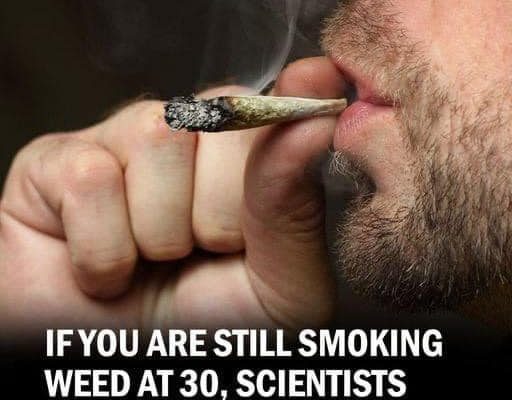What is smoking?
Smoking is when you inhale and exhale smoke from burning plant material that’s rolled into a wrapper (cigarette). You light the end of the cigarette and pull smoke into your mouth through the other end. It travels down your airways, into your lungs and through your bloodstream to your brain and other organs.
This piece focuses on smoking tobacco cigarettes, but you can also smoke cigars, pipes, marijuana (weed/pot) or herbal cigarettes.
Anatomy of a cigarette
Commercially produced cigarettes are made up of:
- Plant material. In tobacco cigarettes, this is dried and processed tobacco (Nicotiana tabacum) leaf stems.
- A rolling paper wrapper.
- Filter (cigarette butt). The filter traps larger bits of the partially burned tobacco while smoke travels through it into your mouth.
Why do people smoke?
People smoke because they find it enjoyable. And because it’s hard to quit once you start, despite the damaging effects of smoking on your body. This is because of your brain’s cravings for nicotine, which make you feel bad when you don’t get it.
Nicotine releases chemicals in your brain that make you feel good. Smoking might make you feel:
- Relaxed and calm.
- Buzzed and energized.
- More able to focus on tasks.
Smoking is also a social activity and a part of people’s routine, just like morning coffee. You might smoke to have fun, to calm yourself before being around a lot of people, or to focus and work. Some people like the taste or just the feeling of holding a cigarette in their hands.
What does smoking do to your body?
Smoking affects everything from the appearance of your skin and nails to how your tissues, organs and even your DNA work. The effects of smoking on your body start the moment you light up a cigarette. Thousands of chemicals released from burning tobacco start their damaging journey before you’ve even taken a puff.
You light the cigarette and hold it to your mouth
The heat from burning the cigarette releases nicotine and creates tar (tobacco residue). As you bring the cigarette to your lips, the tar stains your nails. The smoke dries out and inflames your skin, deepening wrinkles. Inhaling smoke through your nose damages nerve endings. Over time, this reduces your sense of smell.
You inhale cigarette smoke through your mouth
When you take a puff from the cigarette, it goes through a filter. This mostly keeps you from breathing in large particles, but tar, nicotine and other chemicals still get through. The tar stains your teeth and coats your gums and tongue. It damages your tooth enamel, puts you at risk for tooth decay and gum disease, and reduces your ability to taste foods you love.
Smoke moves through your airways
The tar coats your throat and vocal cords as it moves toward your lungs. This might make you cough. Traveling through your airways, tar and hydrogen cyanide (a poisonous gas) paralyze your cilia. Like bristles on a broom, cilia are hair-like strands whose job is to trap and sweep germs and other harmful particles out of your lungs. When they’re damaged, you’re more likely to get sick with respiratory infections.
Smoke fills your lungs and enters your bloodstream
When the smoke reaches your lungs, it travels to the small air sacs (alveoli) and damages them. This can lead to emphysema, a form of COPD (chronic obstructive pulmonary disease). From your alveoli, carbon monoxide in the smoke moves into your blood. It bumps oxygen out of your red blood cells, starving your cells and tissues. The lack of oxygen can make you feel short of breath. Your cells sound the alarm to let your body know you need more oxygen, but this causes inflammation and mucus to form, making it even harder to breathe.
While traveling through your bloodstream, nicotine damages the lining of your blood vessels. This thickens and narrows them, and causes blood cells to stick to them, putting you at risk for blood clots, heart attack and stroke. For people with penises, decreased circulation can make it difficult to get an erection (erectile dysfunction).
Chemicals move through your bloodstream to the rest of your body
Once in your blood, chemicals from cigarette smoke travel throughout your body. This damages your:
- Bones. Nicotine decreases the absorption of calcium and the production of bone-forming cells, causing you to have thinner, brittler bones.
- Eyes. The chemicals in cigarettes plus a lack of oxygen damage your eyes. This can lead to macular degeneration, cataracts and vision loss.
- Immune system. Smoking causes constant inflammation and weakens your immune system. This makes you more likely to get sick and develop autoimmune diseases.
- Hormones. Nicotine can cause hormone changes that can affect your fertility.
- DNA. Arsenic, nickel and radioactive polonium damage your DNA and block the tools your body uses to repair it. DNA damage can lead to cancer and fertility problems from damaged sperm.
Nicotine reaches your brain
From your blood, nicotine heads to your brain. There, it activates receptors that release dopamine, adrenaline, endorphins, serotonin and other “feel-good” signals in your brain. This is where a nicotine “buzz” comes from. It’s like nicotine pushing buttons to make you more relaxed, content or energized. It’s only been seconds since you inhaled that first puff of smoke.
You go through withdrawal
Your liver processes nicotine and you pee it out within a few hours of smoking a cigarette. Your body misses the buzz and craves more, encouraging you to have another one. If you don’t, you experience symptoms of withdrawal, like anxiety, depression, restlessness, anger and insomnia. Your body will develop a tolerance to nicotine and eventually need more and more to make you feel good, leading to nicotine dependence.
If you’re pregnant, it travels to the fetus
Narrowed blood vessels in the placenta and umbilical cord restrict blood flow to the fetus. The blood that does flow through carries carbon monoxide, nicotine and other harmful chemicals. This can prevent the fetus from getting enough oxygen and damage its DNA. People who smoke while they’re pregnant are more likely to have a miscarriage. Babies born to someone who smokes can have low birth weight, heart and lung issues, and developmental delays.
What are the health effects of smoking?
People most commonly associate smoking with causing lung cancer, but smoking can cause or increase your risk for many health conditions in almost every part of your body. These include:
- Cancer. See below for a full list of cancers that smoking can cause.
- Lung disease. This includes COPD, tuberculosis, asthma and pulmonary fibrosis.
- Heart and vascular disease. These can lead to heart attack, stroke or heart failure.
- Eye disease. This includes cataracts, macular degeneration, vision loss and blindness.
- Present-at-birth conditions. These include low birth weight and congenital malformations (birth defects) in babies born to people who smoked while pregnant.
- Miscarriage.
- Type 2 diabetes.
- Rheumatoid arthritis (RA) and other autoimmune diseases.
- Erectile dysfunction.
- Fertility issues.
- Premature aging.
Secondhand smoke, or smoke you breathe in from someone smoking nearby, also has significant health risks.
Smoking and cancer
Smoking causes or increases your risk for many types of cancer. There’s also evidence that people who smoke while getting cancer treatment have a worse outcome (prognosis), are less likely to respond to treatment and are more likely to have the cancer come back (recur). Smoking can cause or increase your risk for:
- Acute myeloid leukemia.
- Bladder cancer.
- Cervical cancer.
- Colorectal cancer.
- Esophageal cancer.
- Kidney cancer.
- Laryngeal cancer and other throat cancers.
- Liver cancer.
- Lung cancer.
- Oral cancer.
- Pancreatic cancer.
- Stomach cancer.
Do lungs repair after smoking?
Yes, your lungs and airways can start to heal if you quit smoking. Inflammation and mucus production calm down in the weeks after quitting and cilia regenerate in a few months. In fact, many of your body systems begin to heal after you quit smoking.
How long this takes depends on how long you smoked before quitting and how much damage it did to your lungs. Some issues, like infertility, can start improving quickly. And some damage may never heal — conditions like COPD and pulmonary fibrosis are irreversible. But if you can stop smoking for several years, your risk of cancer and other health conditions reduces or even returns to the same level as someone who doesn’t smoke.
How do I quit smoking?
There are many tools to help you quit smoking. You might need a combination of different approaches before you find a solution that works for you. Or you might need to change your approach when one stops working. Some options include:
- Cold turkey. This means quitting all at once, without medications or nicotine replacements. This method can work well for some people. But your body’s relationship with nicotine can make it a difficult path.
- Nicotine replacement therapy. This includes gum, lozenges, patches, nasal sprays or inhalers.
- Medication. Your healthcare provider might prescribe bupropion or varenicline to help with withdrawal symptoms and cravings.
- Lifestyle changes. Getting more exercise, changing your routine or using cognitive behavioral therapy (CBT) can help you feel better and break the habits you associate with smoking.
How do I take care of myself if I smoke?
It’s no secret that the best way to take care of yourself if you smoke is to quit. But while you’re in the process of quitting, you can help your body heal with exercise, and by eating nutritious foods and drinking plenty of water. Whether you currently smoke or no longer do, talk to your healthcare provider about getting a routine lung cancer screening. It could catch cancer early and save your life.
A note from Cleveland Clinic
People have been smoking for social and cultural reasons for centuries. Today, the reasons for smoking aren’t all that different: Having a cigarette might be a routine part of your day — or a way to take a break from it.
But now we know how harmful smoking is for your health — and for the health of your loved ones around you. Unfortunately, because of nicotine’s relationship with your brain, knowing that cigarettes are dangerous doesn’t make kicking the habit any easier. It can be helpful to understand this relationship and know why it’s hard to quit. And remember to be kind to yourself while you do so. Going from smoker to former smoker is a process, and a commitment you make to yourself every day.
In addition to smoking cessation tools, it can be helpful to keep in mind how much better you’ll feel in the long run. You may be able to return to activities you used to enjoy, taste and smell foods properly again, protect the health of your loved ones and probably even save some money. Ask for support from friends, family and your healthcare providers — let them know about the change you’re making and how they can help.




